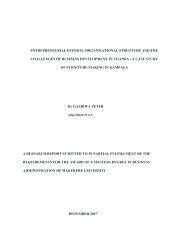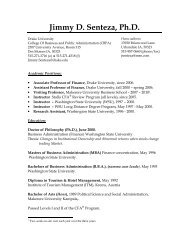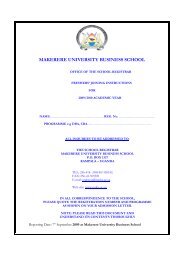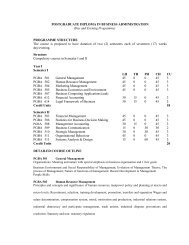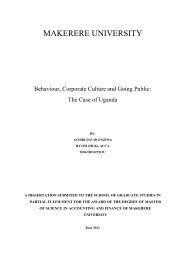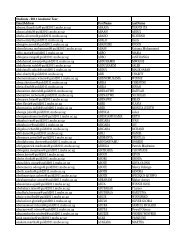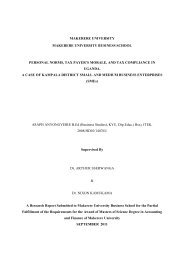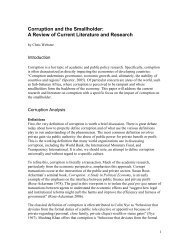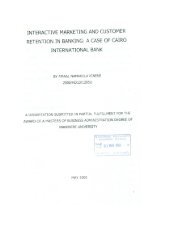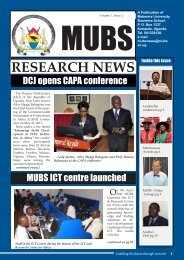13th Annual International Management Conference Proceeding
13th Annual International Management Conference Proceeding
13th Annual International Management Conference Proceeding
Create successful ePaper yourself
Turn your PDF publications into a flip-book with our unique Google optimized e-Paper software.
From the regression above, all the four factors were significant in explaining banana production. Land was<br />
noted to be the major factor with the incidence rate ratio (IRR) of 1.736. This IRR means that a one unit<br />
increase in land will increase banana output by 1.736. From the qualitative data gathered, the vital question<br />
was the size and quality of land. As Feeder (1988) noted, a critical issue for smallholders is the shortage of<br />
good quality farming land. Increasing population pressure and fragmentation of holdings have sharply<br />
reduced cultivated area per person.<br />
A unit increase in capital was found to increase output by only 0.71.This is less compared to land and<br />
labour.Increase in agricultural implements is not likely to increase output like other factors if labour is not<br />
applied to it. From the qualitative data, the reason for this is that most agricultural activities are left into the<br />
hands of the elderly and women as young people spend most of their time in towns and trading centres.Men<br />
also spent most of their time drinking thus leaving some agricultural implements unutilized. Capital is<br />
therefore left unutilized.<br />
According to Chambers (1982) Much as Labour shortage causes low agricultural output, it is important to<br />
note that the problem at times ceases to be Labour shortage in reality, but rather people's unwillingness to<br />
supply their Labour in certain agricultural activities. In such a situation there will always be lack of Labour to<br />
increase output within the available manpower. Hence the amount of output produced will always<br />
disproportionably rhyme with the number of those to consume thus leading to low output.<br />
Application of manure was found to determine banana production in the area. Respondents were earlier<br />
divided into two groups (i.e. those who applied manure and those who did not). From the study, those who<br />
applied manure were likely to increase output more than those who did not apply manure. From the table<br />
below, there was a 95% confidence interval of 34.88-45.67(for non users of manure) and 96.30-120.50(for<br />
users of manure).<br />
Table 3.2: CONFIDENCE INTERVAL<br />
77<br />
95% Confidence Interval for<br />
Mean<br />
Lower Bound Upper Bound<br />
.00 96 40.2813 26.62792 2.71770 34.8859 45.6766 2.00 156.00<br />
1.00 104 108.4038 62.22719 6.10188 96.3022 120.5055 11.00 236.00<br />
Total 200 75.7050 59.21860 4.18739 67.4477 83.9623 2.00 236.00<br />
Application of Manure was found to be statistically significant in explaining variations in output. The<br />
ANOVA Table shows a significant difference between the two categories.<br />
TABLE 3.3: ANOVA Table<br />
Sum of Squares df Mean Square F Sig.<br />
Between Groups 231663.150 1 231663.150 98.390 .000<br />
Within Groups 466198.445 198 2354.538<br />
Total 697861.595 199<br />
The statistical significance of the variables (Land, Labour, and Capital) together with positive coefficients<br />
confirms that these factors determine banana production in the area. Qualitative data from the field confirms<br />
this as indicated below.



